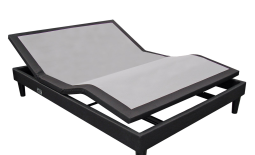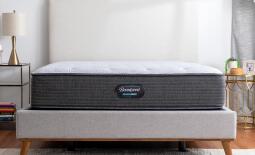Back pain affects a lot of people. In fact, it’s estimated that 8 out of every 10 Americans will experience back pain at some point in their lives. Luckily, our sleep experts are weighing in on ways to ease the discomfort.
First, What Causes Low Back Pain?
The lumbar region is made up of the five vertebrae from your diaphragm to just above your tailbone. For some, this area may be a source of mild to severe discomfort due to a variety of things: poor posture, weak core muscles, even lifting a heavy object the wrong way. When the low back experiences undue stress for any reason, the easiest way to alleviate the pain starts with properly supporting the spinal lumbar region.
How to Get the Right Lumbar Support
There are several pieces of furniture that are specifically designed to help keep your lower back supported while either sitting or lying down. Having targeted support allows the spine to maintain its natural curvature while keeping the lower back muscles from overworking. Here are a few nighttime remedies our sleep experts recommend:
1. The Right Bed
Since we spend about a third of our lives in bed, finding a mattress that supports your back and relieves any pain is crucial. For the ultimate lumbar support, sleep experts suggest finding a bed that allows your shoulders and hips to sink in a little, keeping your spine in alignment. A hybrid mattress, like the Sealy Hybrid Premium, uses zoned coils that provide targeted support to areas that need more pressure relief. Plus, added layers of memory foam let your lumbar spine rest in proper alignment throughout the night.
2. An Adjustable Bed
The right bed can make a huge difference but investing in an adjustable base lets you customize your sleep experience to meet your every need. Not only can you set personalized preferences that target specific areas of your back, but you can also experiment with the zero-gravity setting. Sleep experts say this feeling of weightlessness can relieve lumbar pressure in ways unparalleled by a standard bed base.
3. Sleep Positions
For some, upgrading your bed isn’t an option. Luckily, you can say goodnight to low-back aches and pains by adding just one small thing to your nighttime position: a pillow. For side sleepers, try slipping a pillow between your knees to keep your hips, pelvis and spine level throughout the night. For stomach sleepers, consider placing a pillow beneath your abdomen to better emulate the natural curvature of your spine. Back sleepers, you’re already in the best position to mitigate lumbar pain; however, slipping a small pillow beneath your knees may give you just enough extra support to relieve any lingering pressure.
Getting the right lumbar support is necessary if you want to relieve any low back pain. Whether it’s an upgraded mattress, trying an adjustable bed, or simply using a pillow for extra support, your back (and your sleep!) will feel the difference.









